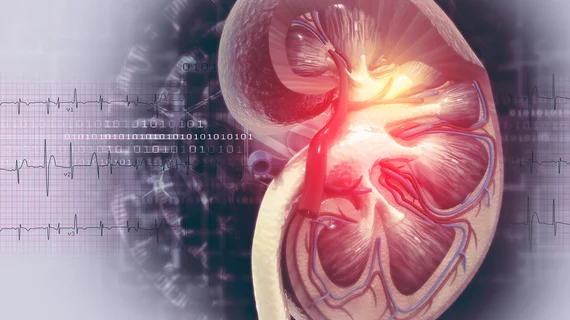Practices not aligned on renal scintigraphy protocols—it may be hurting kidney imaging results
The wide variability in renal scintigraphy imaging protocols and reporting methods for patients with a common kidney condition may be hurting diagnostic accuracy and requires standardization, according to new research.
Nuclear medicine labs rely on diuretic renal scintigraphy (DRS) to detect kidney blockages and assess any swelling in the organs related to urine buildup, known as hydronephrosis. Guidance for these noninvasive exams, however, varies by group, allowing organizations and providers to use institutional protocols. Despite some benefits, new survey results suggest this may lead to problems.
For example, DRS practices across more than 100 facilities in the U.S. showed reporting and exam inconsistencies in patient hydration, radiopharmaceutical type and dosage, and timing of administering diuretics, among other concerns.
“The wide degree of practice variance may have a significant impact on diagnostic accuracy and patient management, with inaccurate or incomplete results,” Kevin P. Banks, MD, with San Antonio Military Medical Center’s Nuclear Medicine Services, and co-authors wrote in JACR. “This survey impresses the need for standardization and improved quality of this important nuclear medicine examination.”
For their research, the team looked at 107 adult DRS protocols and 174 corresponding reports. These data represented all labs applying for genitourinary scintigraphy certification between 2016-2018.
Analyzing 40 variables, the team found many patients are “suboptimally” hydrated during their exams, which can result in false-positive results. In fact, 104 of 107 labs instructed patients to be “well hydrated,” but nearly one-third did not offer more specific guidance.
Furthermore, organizations often administered diuretics at different times, which has the greatest impact on exams, the authors noted. Banks et al. found 35 different techniques used among the 105 sites. Commenting further, the group said their data point to using furosemide 20 minutes after administering a radiopharmaceutical for diagnostic certainty, shorter study times and better patient compliance.
Overall, Banks and co-authors see an opportunity for improved standardization for this “important” nuclear medicine exam.
“The truth is likely that no one single approach works best in all instances, and thus a standardized approach may need to be combined with an individualize approach (i.e., a standard protocol with a specific alternative protocol in the setting of renal failure or other factors),” the authors wrote Aug. 6.
Read more from the study here.

